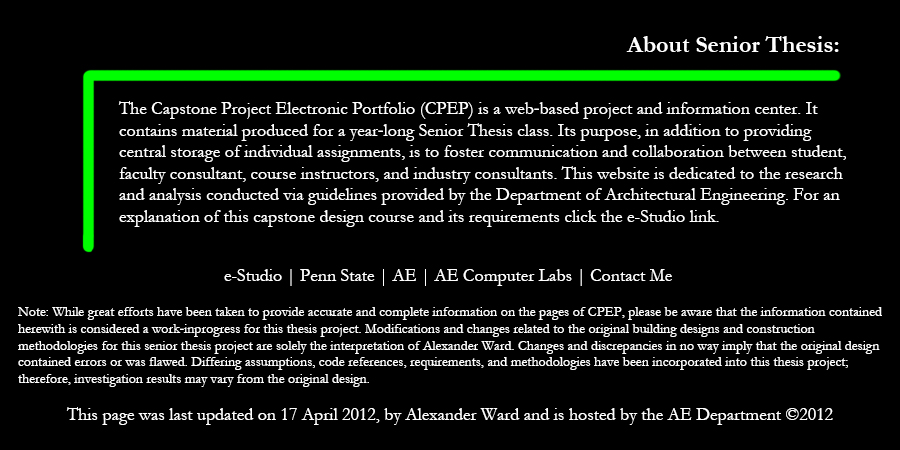

| ABET Assessment | Outcome not able to be assessed |
Level of ability demonstrated but below acceptable |
Minimum acceptable level of ability demonstrated |
More than minimum level of ability demonstrated |
| (Score of 0) | (Score of 1) | (Score of 2) | (Score of 3) | |
| An ability to apply knowledge of mathematics, science, and engineering | - | - | - | X |
| An ability to analyze and interpret data | - | - | - | X |
| An ability to design a system, component, or process to meet desired needs | - | - | - | X |
| An ability to identify, formulate, and solve engineering problems | - | - | - | X |
| An understanding of professional and ethical responsibility | - | - | - | X |
| An ability to communicate effectively | - | - | - | X |
| The broad education necessary to understand the impact of engineering solutions in a global and societal context | - | - | X | - |
| An ability to engage in life-long learning | - | - | X | - |
| A knowledge of contemporary issues | - | - | - | X |
| An ability to use the techniques, skills, and modern engineering tools necessary for engineering practice | - | - | - | X |
| Engineering design capabilities in at least two (2) of the (3) basic curriculum areas of architectural engineering, and that design has been integrated across the breadth of the program | - | - | - | X |
| Communication and interaction with other design professionals in the execution of building projects | - | - | X | - |
